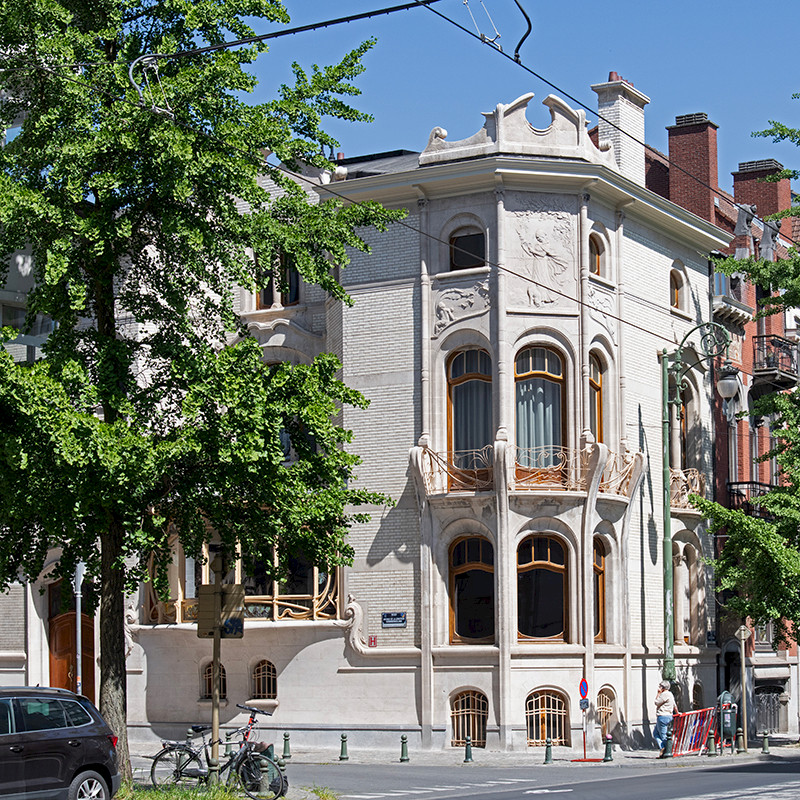Programme
Visits / Exhibition
Hannon House

In 1902, engineer and Art Nouveau aficionado Édouard Hannon commissioned Jules Brunfaut to build him a town house on the corner of Avenue de la Jonction/Verbindingslaan and Avenue Brugmann/Brugmannlaan. At Hannon's request, the architect abandoned his favoured eclectic style and instead drew on concepts seen in the work of Horta, van Rysselberghe and van de Velde, crafting a façade whose overt classicism is counterbalanced by a number of details strongly influenced by Art Nouveau. These include the softly curving balconies that temper the angularity of the corner bay, crowned by a Victor Rousseau bas-relief, and the rounded base, in Euville stone, supporting the ironwork of the conservatory. The stairwell, a true artistic masterpiece, features a wrought-iron banister crafted by Pierre Desmedt and dreamlike frescoes by Rouen painter Paul-Albert Baudouin (1844-1931), who also painted the frieze in the smoking room in 1904. Unlike Victor Horta's stairwells, the one in the Hôtel Hannon has no skylight. Instead, it is illuminated indirectly by the light that filters through the slightly amber American glass in the doors to the smoking room and drawing room. The floor is decorated with a remarkable mosaic with undulating motifs. The stained-glass windows with their plant motifs were created by Raphaël Evaldre and Tiffany, while the decor and furniture were by Émile Gallé and Louis Majorelle (the original furnishings have since disappeared). The house, now a museum, has been extensively restored and re-opened to the public in June 2023. (Listed 18/11/1976)
In 1900, with the Industrial Revolution in full swing, artists such as Paul Hankar, Henry van de Velde, Gustave Serrurier-Bovy and others set out to change the way people lived. They became proponents of the total work of art. Meanwhile in France, Émile Gallé, whose work the Hannons were fond of collecting, founded the École de Nancy (Nancy School). Though sharing the same ideals as the Belgians, he responded in a radically different way, by championing quality craftsmanship in the face of industrialisation.
Thanks to these initiatives, everyday art was tailor-made to meet the demands of an emerging social class that was seeking to assert itself as a class in its own right.
Was Art Nouveau able to live up to this idealism? Did it become an art for all?
The Hannon House team will be organising guided tours and discussions on these issues, taking in the building itself and the first Belgian Art Nouveau exhibition.
Guided tours in French Belgian Sign Language: Saturday at 12:00 and Sunday at 16:00. In cooperation with Arts & Culture (more info and booking : https://heritagedays.urban.brussels/en/practicalities/).
Practical information
Sat. & Sun. 13:00 to 18:15
Avenue de la Jonction/Verbindingslaan 1 – Saint-Gilles/Sint-Gillis
Guided tours: Sat. & Sun. 9:00 to 12:00 (advance booking required)
Non accessible